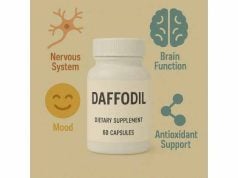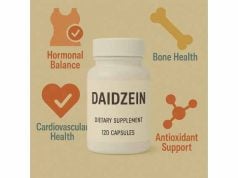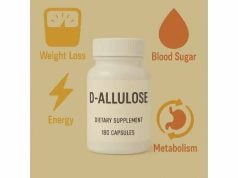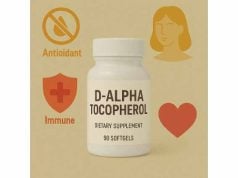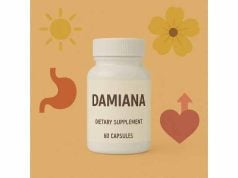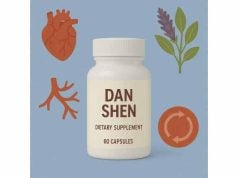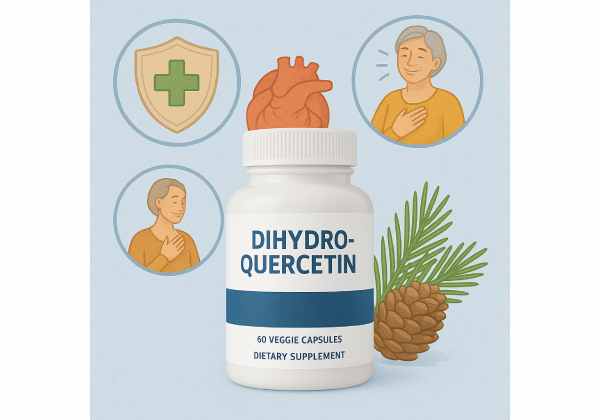
Dihydroquercetin—better known as taxifolin—is a natural flavonoid found in Siberian larch, onions, citrus, and some herbs. It belongs to the flavanonol family, giving it slightly different chemistry from quercetin, its more famous cousin. In cells and animal models, taxifolin shows antioxidant, anti-inflammatory, and microcirculatory support properties, and small early human studies have begun exploring cognitive and fatigue effects. In the United States, a taxifolin preparation has been evaluated as Generally Recognized as Safe (GRAS) for use in specific foods, and supplements commonly provide 50–300 mg per day. That said, large, long-duration clinical trials are still limited. This guide explains what dihydroquercetin is, how it might work, how to think about dose and timing, where it fits (and does not fit) in a practical regimen, who should avoid it, and how to read the evidence with a clear, people-first lens.
Quick Dihydroquercetin Highlights
- Supports antioxidant and anti-inflammatory defenses in preclinical and early human work.
- Evidence base is growing but clinical outcomes in major diseases remain limited.
- Practical supplemental intake: 50–300 mg/day with food; no universal therapeutic dose.
- Safety caveat: possible additive effects with anticoagulants or antiplatelets; monitor for bruising.
- Avoid during pregnancy, breastfeeding, in children, or pre-surgery unless medically advised.
Table of Contents
- What is dihydroquercetin (taxifolin)?
- Does it work? Benefits and limitations
- How to use it effectively
- How much and when to take?
- Safety, interactions, who should avoid
- What the evidence actually says
What is dihydroquercetin (taxifolin)?
Dihydroquercetin (DHQ), often labeled as taxifolin, is a polyphenolic compound in the flavanonol subclass. While it shares a backbone with quercetin, a subtle structural difference—the saturation of a double bond—gives DHQ distinct solubility and reactivity. Those differences can change how it behaves in the body: how it is absorbed, transformed, and delivered to tissues.
Where it comes from. Taxifolin occurs naturally in Siberian larch (Larix sibirica/gmelinii), Douglas fir, onions, milk thistle, and some citrus peels. Commercially, it is often extracted from larch wood and standardized for use in foods or supplements. In the U.S., a specific dihydroquercetin preparation received a favorable GRAS response for limited use in beverages, dairy products, and chocolate, reflecting a toxicology package and projected dietary exposures that regulators deemed acceptable for those intended uses. In practice, most consumers encounter DHQ in standalone capsules or in formulas combined with vitamin C or other flavonoids.
How it works (mechanisms, in plain language). DHQ is best described as a signaling modulator with antioxidant capacity. In experimental systems:
- It quenches reactive oxygen species and preserves endogenous defenses (glutathione, superoxide dismutase).
- It can reduce pro-inflammatory signaling (e.g., NF-κB) and, in some contexts, activate Nrf2, a transcription factor that induces cellular stress-response genes.
- It shows effects on vascular endothelium, improving nitric-oxide–dependent relaxation in hypertensive animal models and supporting microcirculation in preclinical work.
- It interacts with cell survival pathways, dampening apoptosis under stress in diverse tissues (liver, kidney, heart) in animal and cellular studies.
Pharmacokinetics in brief. Like many flavonoids, DHQ has modest oral bioavailability, with substantial phase-II conjugation (glucuronidation and sulfation) after absorption. Nanodispersion and other delivery methods can change plasma exposure in animals, but for typical capsules, you should assume low parent compound in blood and a mixture of conjugates circulating. This does not mean it is inert; conjugates can be active or act as reservoirs that deconjugate in tissues. Timing with meals and gut health may influence how much reaches circulation and where it acts (e.g., local effects in the gut vs systemic).
Taxifolin vs quercetin. The two compounds overlap in many in vitro effects, but they are not identical. DHQ tends to be somewhat more water-soluble and may be better tolerated for some users at comparable supplemental doses. Quercetin has a larger human clinical footprint; DHQ’s human data are catching up, with early trials in cognition, fatigue, and immune markers.
Bottom line. DHQ is a natural, food-derived flavonoid with plausible biological actions and an encouraging safety profile for common supplemental ranges. The most robust results currently come from mechanistic and animal research, while human trials are emerging.
Does it work? Benefits and limitations
The fairest summary is promising, but not definitive. Here is how the evidence stacks up across major areas people care about:
1) Inflammation and oxidative stress. Across cell and animal models, DHQ reduces inflammatory mediators (such as TNF-α, IL-6) and limits oxidative damage to lipids and proteins. These effects map onto well-studied pathways (down-regulating NF-κB, up-regulating Nrf2-dependent genes) and translate into tissue-level protection in the liver, kidney, heart, and colon in preclinical studies. Practically, this suggests a role in stress resilience rather than a cure for a specific disease.
2) Vascular and metabolic health. In hypertensive rats and other models, taxifolin improves endothelium-dependent relaxation and lowers blood pressure, likely by enhancing nitric oxide signaling and reducing vasoconstrictive and inflammatory tone. DHQ also shows favorable shifts in lipid accumulation and inflammatory fibrosis in non-alcoholic steatohepatitis models, and it modulates mitochondrial and adipose signaling in ways that may support a healthier metabolic profile. These signals are encouraging but need larger, controlled human studies to verify.
3) Brain and fatigue. A randomized, double-blind, placebo-controlled crossover study using taxifolin-rich foods in healthy young adults reported changes in brain activity and reduced subjective mental fatigue after acute intake, with transcriptome changes consistent with immune and stress-response modulation. This is early evidence, but it’s the kind of human finding that complements the mechanistic literature.
4) Gut barrier and microbiota. In colitis models, dietary taxifolin preserves intestinal barrier integrity, reduces inflammatory signaling, and nudges gut microbial composition. If your goals include gut calmness or resilience during stressors, this is a plausible area where DHQ’s local actions could matter.
5) Immune balance. DHQ’s antioxidant and anti-inflammatory actions can secondarily influence innate immune responses. Ongoing pilot studies are exploring combinations (e.g., with ergothioneine) and innate immune biomarkers in healthy volunteers. While far from clinical endpoints, these data help map mechanism to human physiology.
Where the evidence is thin. Claims for DHQ as a standalone therapy for chronic disease (e.g., reversing atherosclerosis or treating fatty liver) are not yet supported by large human trials. Some exciting areas (e.g., cerebral amyloid angiopathy, neurodegeneration) have strong preclinical support and ongoing or planned clinical work, but no confirmed outcome data in patients yet.
Practical takeaway. If your aim is to support everyday resilience (oxidative stress, low-grade inflammation, concentration/fatigue) as part of a broader lifestyle program, DHQ is a reasonable candidate. If you want disease-modifying effects, you will need to look to established therapies and watch for future clinical trials.
How to use it effectively
Because there is no single “therapeutic” dose universally accepted for taxifolin, effectiveness often comes down to consistent intake, smart timing, and stacking it sensibly with diet and habits that amplify its biology.
Choose forms that fit your routine.
- Standalone capsules or tablets. Most reputable products standardize DHQ (taxifolin) content and list mg per serving. Look for third-party testing (e.g., USP, NSF, or equivalent) and a recent certificate of analysis.
- Food-based delivery. Taxifolin appears naturally in some foods; certain functional foods used in research concentrate larch-derived taxifolin. Food matrices can influence absorption and tolerability.
- Complexes/nanodispersions. Experimental formulations (used mainly in research) may increase plasma exposure. For everyday use, simple standardized capsules with food are sufficient for most people.
Timing and with-food strategy.
- Take DHQ with a meal to improve GI tolerance and to align with how polyphenols are normally encountered. Co-ingestion with mixed macronutrients is practical and may slightly modulate absorption.
- If you split doses, morning and evening meals are convenient anchors (e.g., 100–150 mg twice daily).
Stacking without overcomplicating.
- With vitamin C. Many flavonoid products pair with vitamin C. The rationale is biochemical (antioxidant network “recycling”), though head-to-head human evidence for superiority is limited.
- With lifestyle anchors. Effects of DHQ on oxidative and inflammatory tone are modest compared with the impact of sleep, activity, diet quality, and stress management. Use DHQ to complement—not substitute—those pillars.
- Do not stack indiscriminately with other polyphenols known to influence platelets (e.g., high-dose resveratrol or curcumin) if you use anticoagulants/antiplatelets. Be deliberate and involve your clinician.
When to consider a trial.
- You seek cognitive or fatigue support and already have basics in place (sleep, hydration, breaks).
- You want general cardio-metabolic support and are optimizing diet and exercise; DHQ can be a low-risk add-on in typical supplemental ranges.
- You are sensitive to quercetin (GI upset) and want a related option that some users find gentler.
Set expectations and track.
- Give a 6–12 week trial with consistent dosing. Track what you care about (e.g., fatigue ratings, training recovery, GI comfort). If nothing changes, reconsider the need, the dose, or whether a different strategy fits better.
- For longer trials or if you have liver risk factors, check baseline and follow-up labs under clinical guidance.
Quality control matters.
- Select products from brands with transparent sourcing (often larch-derived taxifolin) and published test results.
- Avoid research-grade chemicals not intended for ingestion.
How much and when to take?
There is no universally accepted therapeutic dose for dihydroquercetin. Your “right dose” depends on purpose, tolerance, and context. The ranges below reflect common commercial practice, food-use evaluations, and early human research, not a disease-treatment standard.
Everyday supplemental ranges (adults):
- Typical range: 50–300 mg/day, taken with food.
- Split dosing: If you go above ~150 mg/day, many users do well splitting into 100–150 mg twice daily.
- Upper practical range: Some regimens use up to ~400–600 mg/day short-term under clinician supervision, but this exceeds what most people need and may not add benefit.
Why these numbers?
- In the U.S., a larch-derived dihydroquercetin preparation received an FDA GRAS no-questions letter for use in certain foods, with projected cumulative exposure around 200 mg/day at the 90th percentile for intended uses. That is not a supplement dose recommendation, but it anchors a safety context for everyday intakes.
- A randomized, double-blind, placebo-controlled crossover study using taxifolin-rich foods in healthy adults found reduced subjective mental fatigue and changes in brain activity after acute intake, highlighting feasibility at realistic food-equivalent doses.
- Animal pharmacokinetic work shows low parent bioavailability after oral dosing, which is typical for flavonoids; this supports with-food intake and consistency rather than chasing high single doses.
Timing tips that matter:
- Take with breakfast or the main meal to minimize GI complaints.
- For focus or training support, some people prefer morning dosing; for recovery-oriented goals, evening may fit better. Evidence does not mandate a specific clock time—consistency beats timing.
Special scenarios (always clinician-guided):
- Polyphenol-rich stacks. If combining with quercetin, curcumin, or resveratrol, keep individual doses moderate and watch for GI effects or easy bruising.
- Liver concerns. While DHQ is generally well tolerated, if you have liver disease or take hepatically metabolized medications, start at the low end (50–100 mg/day) and coordinate with your clinician.
- Before procedures. Stop non-essential polyphenol supplements 1–2 weeks pre-surgery to simplify peri-operative management and minimize theoretical bleeding risk.
When to pause or stop:
- New or persistent GI upset, headaches, easy bruising/bleeding, or any allergic-type symptoms (rash, itching) should prompt discontinuation and medical advice.
Bottom line: Start low, take with food, track outcomes that matter to you, and escalate only if needed. If you do not notice clear benefits after a fair trial, it is reasonable to stop.
Safety, interactions, who should avoid
General tolerance. In toxicology packages and food-use evaluations, dihydroquercetin has shown a favorable safety profile at projected dietary intakes. Human studies using taxifolin-rich foods or supplemental products report good tolerability, most often without serious adverse events. Like other polyphenols, occasional GI discomfort can occur, especially with higher single doses or on an empty stomach.
Medication interactions: use caution if you take…
- Anticoagulants or antiplatelets (e.g., warfarin, apixaban, clopidogrel). Flavonoids can modestly affect platelet function in vitro and ex vivo. While clinical significance at common DHQ doses is uncertain, additive effects are undesirable. Monitor for easy bruising; involve your clinician.
- Drugs with narrow therapeutic windows where metabolism or transport might be influenced by polyphenols (theoretical). Keep your prescriber informed and avoid stacking multiple high-dose supplements.
- Chemotherapy or immunomodulators. Discuss with your oncology or specialty team before use; antioxidants can interact with treatment goals in some protocols.
Populations that should avoid unless medically advised:
- Pregnant or breastfeeding individuals. Insufficient controlled safety data.
- Children and adolescents. No established dosing standards.
- Pre-operative patients. Stop non-essential polyphenols 1–2 weeks before surgery.
- Allergy-prone individuals with reactions to larch-derived products or certain excipients—review labels carefully.
Practical safety habits:
- Choose reputable brands with third-party testing; verify identity and purity.
- Take with meals, and avoid escalating dose rapidly.
- Document all supplements alongside medications and share with your clinician.
- If you experience new symptoms, stop and seek advice; most minor effects resolve on discontinuation.
What we do not know yet. Long-term, high-dose DHQ supplementation in diverse patient populations has not been extensively tested. Until larger randomized trials report outcomes, conservative use is prudent—especially when you take prescription medications or manage chronic conditions.
What the evidence actually says
Here is a balanced, evidence-first reading of dihydroquercetin research:
1) Mechanisms are strong; translation is underway. Comprehensive reviews synthesize taxifolin’s antioxidant/anti-inflammatory mechanisms, including modulation of Nrf2 and NF-κB pathways and protection across organs in preclinical models. This mechanistic depth makes DHQ credible for supportive roles in metabolic, vascular, hepatic, and neuroinflammatory contexts, but mechanisms alone do not guarantee clinical benefit.
2) Human data exist, but remain early. Small human studies—such as a randomized, double-blind crossover trial using taxifolin-rich foods—show acute changes in brain activity and reduced mental fatigue in healthy adults, with supportive transcriptomic shifts. Pilot work is exploring immune biomarkers in volunteers. These studies support feasibility and biological activity in people, but they are not disease-modifying trials.
3) Safety context is favorable at everyday exposures. A U.S. FDA GRAS letter for a specific dihydroquercetin preparation supports intended food uses with modeled exposures around 200 mg/day at the high end. Toxicology data and human tolerance within that context are reassuring. This does not translate directly into medical dosing but underscores low risk for typical supplemental ranges when used as directed.
4) Pharmacokinetics reflect the “polyphenol pattern.” Oral DHQ shows low parent bioavailability with rapid conjugation (glucuronides/sulfates). Animal studies demonstrate that formulation can modestly increase plasma levels, but for everyday users the key levers are consistent intake with meals and realistic expectations: effects are more about signaling nudges than pharmacologic spikes.
5) Where to be careful. Because flavonoids can interact with platelet function and drug metabolism in principle, people on anticoagulants/antiplatelets or with scheduled surgery should be cautious. Additionally, bold claims for weight loss, blood sugar reversal, or disease treatment are premature; such outcomes require larger, well-controlled human trials.
Bottom line. Dihydroquercetin is best viewed as a supportive, low-risk adjunct to lifestyle measures, with growing but incomplete human evidence. Use it steadily and thoughtfully, and evaluate whether it meaningfully helps your goals over a defined trial period.
References
- An insight into novel therapeutic potentials of taxifolin (2023)
- Bioavailability and Safety of Dihydroquercetin (Review) (2022)
- Ingestion of taxifolin-rich foods affects brain activity, mental fatigue, and the whole blood transcriptome in healthy young adults: a randomized, double-blind, placebo-controlled, crossover study (2023)
- GRAS Notice GRN 916 Agency Response Letter (2021)
- UHPLC-MS/MS Determination, Pharmacokinetic, and Bioavailability Study of Taxifolin in Rat Plasma after Oral Administration of its Nanodispersion (2016)
Disclaimer
This guide is educational and does not replace personalized medical advice, diagnosis, or treatment. Dihydroquercetin (taxifolin) is not a cure for any disease, and optimal dosing for specific conditions has not been established. Do not start or stop supplements—especially if you are pregnant or breastfeeding, under 18, scheduled for surgery, or taking prescription medications—without guidance from a qualified healthcare professional.
If this article helped you, please consider sharing it with a friend or on Facebook or X, and follow us for future updates. Your support helps us continue creating careful, evidence-based resources. Thank you.

